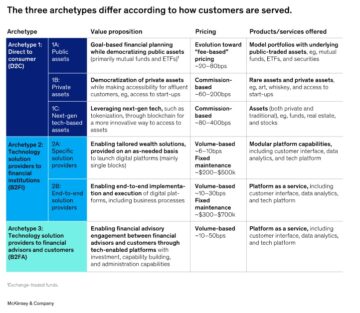April 29, 2024


Running a business isn’t for the faint of hearts. As an entrepreneur, you must juggle operations, marketing, and finances and attend to customers’ needs—alongside a million other things.
In most cases, information technology (IT) solutions can help streamline your life. However, aligning your IT strategy and business objectives is necessary for these fancy software and tech devices to produce the best results. Doing so is necessary so they don’t feel like another business expense expanding your to-do list.
So, how do you ensure that your IT plan supports and drives your business? In this article, we’ll show you how to make every digital transformation your secret weapon, not another costly headache.
Why Bother Aligning Them?
Imagine this: you invest in a top-of-the-line marketing automation platform, only to realize it integrates poorly with your existing customer relationship management (CRM) system. Data gets siloed, workflows break down, and frustration ensues. This is what happens when IT and business strategies operate in separate universes.
Tailoring your information technology goals with your business strategies brings a host of benefits, including:
- Efficiency: Every IT investment serves a purpose, directly contributing to your business objectives. There’s no wastage of resources on tech solutions that don’t add value.
- Innovation: With IT aligned with your business objectives, you can leverage technology to innovate and stay ahead of your competitors.
- Advantage: Technology can give you a competitive edge, whether it’s through automation, data-driven decision-making, or a superior customer experience.
- Risk Mitigation: A well-aligned IT strategy ensures your systems are secure and compliant, minimizing risks such as data breaches or regulatory violations.
Now that we understand the stakes, let’s drill into the actionable steps for business and IT strategy alignment:
1. Getting Started: Understanding Your Business Goals
Before diving headfirst into the world of tech, take a step back. If you already have one, revisit your business vision and goals. Starting from scratch? Here are some prompts to get you thinking:
What do you aim to achieve in the short and long term?
Are you hoping to increase sales, improve customer service, or expand into new markets?
Who are your ideal customers?
Understanding their needs and behaviour will shape your technology choices—especially your product development, marketing, customer service, and other organizational needs.
What are your biggest challenges?
Are operational inefficiencies, marketing roadblocks, or data gaps hindering your progress? List your challenges and rank them from the most to least urgent.
Whatever your immediate and long-term strategic plans are, your information technology strategy should be a means to these ends. Creating one may sound simple, but it requires the skills and expertise you might not have in-house. It’s crucial to seek help from specialists trained in your niche and area. For instance, find IT companies in Melbourne if you’re running a business in one of the busiest cities in Australia.
2. Conducting a Technology Audit
Take stock of your current IT infrastructure and identify gaps and inefficiencies that need addressing. Note that this isn’t just about assessing hardware and software; it’s about enabling your business to thrive. List important questions, including:
- What systems and tools are you using?
- Are these tools aligned with your business objectives?
- Which technologies are most needed to accomplish your company’s strategic goals?
This activity lays the groundwork for designing a tailored information technology strategy, a crucial undertaking that might require external help.


3. Translating Goals into IT Needs
Now, let’s translate those goals into concrete IT needs. Here’s a breakdown of some common business goals and their corresponding tech solutions:
Increasing Sales
Explore e-commerce platforms, marketing automation tools for targeted campaigns, and CRM systems to manage leads and nurture relationships.
Improving Customer Service
Implement a live chat solution, a robust ticketing system, or even a knowledge base to empower customers to self-serve. A recent survey shows that 88% of customers expect brands to have a self-service portal rather than being asked to wait for agents to attend to their needs.
Boosting Productivity and Collaboration
Cloud-based productivity suites, project management tools, and communication platforms can keep your team connected and on the same page, regardless of location.
Gaining Business Insights
Business intelligence (BI) tools can help you analyze data to identify trends, understand customer behaviour, and make data-driven decisions.
Prioritizing Strategic Projects
Not all IT projects are created equal. Evaluate potential initiatives based on their alignment with your business goals and potential return on investment (ROI). Prioritize projects directly contributing to your strategic objectives.
4. Building Your IT Strategy: Practical Tips for Small Businesses
Here’s how to translate your IT needs into a workable strategy:
-
Start Small
You don’t need to overhaul your entire tech infrastructure overnight. Start with the tools that have the biggest impact on your most pressing goals.
-
Consider Managed IT Services
Outsourcing your IT needs to a managed service provider (MSP) can be a lifesaver. It will free you to focus on your core business while ensuring your systems are secure and up-to-date. You can choose to hand over a few or all of your IT needs to an experienced provider. Learn more about Network 1’s managed IT services and see how they can boost your overall business strategy.
-
Embrace Cloud Solutions
Cloud-based solutions are cost-effective, scalable, and easy to maintain, making them perfect for small businesses.
-
Ensure Security
Data breaches can be devastating, especially for small businesses. Implement robust security measures, such as firewalls, anti-virus software, and team member training programs.
-
Embrace User-Friendliness
Your chosen technology should be user-friendly and intuitive for your team. Don’t get bogged down by overly complex solutions.
More importantly, ensure clear communication between your business and IT teams—whether internal or outsourced. Clearly defined goals and expectations lead to better technology decisions.
5. Measure, Evaluate, and Stay Agile
Alignment isn’t a one-time achievement; it’s an ongoing process. Establish key performance indicators (KPIs) to measure the success of your IT initiatives. Regularly evaluate performance against these metrics and adapt your strategy as needed.
Technology constantly evolves, so your IT strategy must be flexible and adaptable. Revisit and revise your plan as your business grows and your goals change.
Wrapping Up
Aligning your IT strategy with your business goals helps you develop a roadmap for business success. Taking heed of the steps above helps ensure that your IT infrastructure becomes a strategic asset, driving your business toward success.
It’s not just about embracing technology; it’s about harnessing its power to realize your business vision. With effective implementation, you can optimize technology to streamline operations, win over customers, and leave your competitors in the dust.

 The National Crowdfunding & Fintech Association (NCFA Canada) is a financial innovation ecosystem that provides education, market intelligence, industry stewardship, networking and funding opportunities and services to thousands of community members and works closely with industry, government, partners and affiliates to create a vibrant and innovative fintech and funding industry in Canada. Decentralized and distributed, NCFA is engaged with global stakeholders and helps incubate projects and investment in fintech, alternative finance, crowdfunding, peer-to-peer finance, payments, digital assets and tokens, artificial intelligence, blockchain, cryptocurrency, regtech, and insurtech sectors. Join Canada’s Fintech & Funding Community today FREE! Or become a contributing member and get perks. For more information, please visit: www.ncfacanada.org
The National Crowdfunding & Fintech Association (NCFA Canada) is a financial innovation ecosystem that provides education, market intelligence, industry stewardship, networking and funding opportunities and services to thousands of community members and works closely with industry, government, partners and affiliates to create a vibrant and innovative fintech and funding industry in Canada. Decentralized and distributed, NCFA is engaged with global stakeholders and helps incubate projects and investment in fintech, alternative finance, crowdfunding, peer-to-peer finance, payments, digital assets and tokens, artificial intelligence, blockchain, cryptocurrency, regtech, and insurtech sectors. Join Canada’s Fintech & Funding Community today FREE! Or become a contributing member and get perks. For more information, please visit: www.ncfacanada.org
Related Posts
- SEO Powered Content & PR Distribution. Get Amplified Today.
- PlatoData.Network Vertical Generative Ai. Empower Yourself. Access Here.
- PlatoAiStream. Web3 Intelligence. Knowledge Amplified. Access Here.
- PlatoESG. Carbon, CleanTech, Energy, Environment, Solar, Waste Management. Access Here.
- PlatoHealth. Biotech and Clinical Trials Intelligence. Access Here.
- Source: https://ncfacanada.org/how-to-align-it-strategy-with-business-strategy-a-helpful-guide/
- :is
- :not
- 1
- 150
- 2018
- 29
- 400
- 62
- a
- About
- above
- accomplish
- Achieve
- achievement
- actionable
- activity
- adapt
- adaptable
- add
- addressing
- affiliates
- against
- agents
- ahead
- aim
- align
- aligned
- aligning
- alignment
- All
- already
- alternative
- alternative finance
- an
- analyze
- and
- Another
- ARE
- AREA
- article
- artificial
- artificial intelligence
- AS
- asked
- Assessing
- asset
- Assets
- attend
- Australia
- Automation
- back
- base
- based
- BE
- become
- becomes
- behaviour
- being
- benefits
- BEST
- Better
- between
- Biggest
- blockchain
- bogged
- boost
- brands
- breaches
- Break
- Breakdown
- Brings
- Building
- busiest
- business
- business strategy
- businesses
- but
- by
- cache
- Campaigns
- CAN
- Canada
- cases
- challenges
- change
- chat
- Choose
- chosen
- Cities
- clear
- clearly
- closely
- Cloud
- COM
- Common
- Communication
- community
- Companies
- company
- competitive
- competitors
- complex
- compliant
- concrete
- conducting
- connected
- Consider
- constantly
- contributing
- Core
- Corresponding
- cost-effective
- costly
- create
- created
- Creating
- CRM
- CRM systems
- Crowdfunding
- crucial
- cryptocurrency
- Current
- customer
- customer experience
- Customer Relationship
- customer relationship management
- Customer Service
- Customers
- data
- Data Breaches
- data-driven
- decentralized
- Decision Making
- decisions
- defined
- designing
- develop
- Development
- Devices
- digital
- Digital Assets
- Digital Transformation
- directly
- distributed
- diving
- do
- doing
- don
- Dont
- down
- drives
- driving
- Dust
- e-commerce
- e-commerce platforms
- easy
- ecosystem
- Edge
- Education
- Effective
- embrace
- embracing
- empower
- enabling
- ends
- engaged
- ensure
- ensures
- ensuring
- Entire
- Entrepreneur
- equal
- especially
- establish
- Ether (ETH)
- evaluate
- Even
- Every
- evolves
- existing
- Expand
- expanding
- expect
- expectations
- expense
- experience
- experienced
- expertise
- external
- faint
- fancy
- feel
- few
- finance
- Finances
- financial
- financial innovation
- fintech
- firewalls
- flexible
- Focus
- For
- Free
- from
- frustration
- funding
- funding opportunities
- gaps
- get
- gets
- getting
- Give
- Global
- Goals
- Government
- groundwork
- Grows
- guide
- hand
- happens
- Hardware
- Harnessing
- Have
- hearts
- help
- helpful
- helps
- here
- High
- hoping
- host
- How
- How To
- However
- http
- HTTPS
- ideal
- identify
- if
- immediate
- Impact
- implement
- implementation
- important
- importantly
- improve
- in
- Including
- Increase
- Indicators
- industry
- inefficiencies
- information
- information technology
- Infrastructure
- initiatives
- innovate
- Innovation
- innovative
- instance
- Insurtech
- Integrates
- Intelligence
- internal
- into
- intuitive
- Invest
- investment
- isn
- IT
- IT companies
- ITS
- Jan
- jpg
- just
- Keep
- Key
- knowledge
- Lays
- lead
- Leads
- LEARN
- least
- Leave
- let
- Leverage
- Life
- like
- List
- live
- ll
- location
- Long
- long-term
- maintain
- make
- Making
- manage
- managed
- management
- Management Tools
- Market
- Marketing
- marketing automation
- Markets
- max-width
- May..
- means
- measure
- measures
- member
- Members
- Metrics
- might
- million
- minimizing
- mitigation
- more
- most
- must
- necessary
- Need
- needed
- needs
- networking
- New
- niche
- no
- note
- nurture
- objectives
- of
- on
- ONE
- ongoing
- only
- operate
- operational
- Operations
- opportunities
- Optimize
- or
- organizational
- Other
- over
- overall
- Overhaul
- overnight
- page
- partners
- payments
- peer to peer
- perfect
- performance
- perks
- plan
- plans
- platform
- Platforms
- plato
- Plato Data Intelligence
- PlatoData
- please
- Portal
- potential
- power
- Practical
- pressing
- Prioritize
- process
- produce
- Product
- product development
- productivity
- Programs
- Progress
- project
- project management
- projects
- prompts
- provider
- provides
- purpose
- Questions
- rank
- rather
- RE
- realize
- recent
- Regardless
- Regtech
- regularly
- regulatory
- relationship
- Relationship Management
- Relationships
- require
- requires
- Resources
- Results
- return
- revise
- risks
- roadblocks
- roadmap
- robust
- ROI
- running
- s
- sales
- same
- scalable
- scratch
- Secret
- Sectors
- secure
- security
- security measures
- see
- Seek
- Self-service
- separate
- serves
- service
- Service Provider
- Services
- Shape
- Short
- should
- show
- Shows
- siloed
- Simple
- skills
- small
- small businesses
- So
- Software
- solution
- Solutions
- some
- Sound
- specialists
- stakeholders
- stakes
- start
- started
- Starting
- stay
- Step
- Steps
- Stewardship
- stock
- Strategic
- strategies
- Strategy
- streamline
- success
- such
- superior
- Supports
- Survey
- system
- Systems
- T
- tailored
- Take
- taking
- targeted
- team
- tech
- Technologies
- Technology
- Technology Strategy
- term
- than
- that
- The
- the world
- their
- Them
- There.
- These
- they
- things
- Thinking
- this
- those
- thousands
- Thrive
- Through
- ticketing
- tips
- to
- today
- Tokens
- tools
- toward
- trained
- Training
- Transformation
- translate
- Trends
- understand
- understanding
- up-to-date
- urgent
- user-friendly
- using
- value
- vibrant
- Violations
- vision
- Visit
- wait
- we
- What
- when
- whether
- while
- will
- win
- with
- workflows
- works
- world
- you
- Your
- zephyrnet












